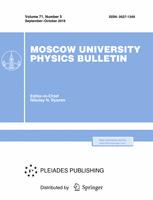In this paper, we investigate a kinemon superconducting artificial atom. We focus on the symmetric case, where the external magnetic flux is equally distributed between the SQUID elements. By varying the energy parameters of the qubit, we identify four distinct operating modes. We determine which modes make the kinemon qubit suitable for application in quantum devices and maximize the anharmonicity for the top and bottom "sweet spots" within these modes. Additionally, we discuss how the optimal parameters are changed when we take into consideration fabrication errors. The optimized anharmonicity and charging energy values are several times higher than those of the transmon qubit fabricated using the same technology. We demonstrate that incorporating an inductive element into the qubit circuit suppresses charge dispersion. Therefore, we do not expect a decrease in the relaxation and dephasing times for kinemon qubits.
85.25.Cp Josephson devices
74.78.-w Superconducting films and low-dimensional structures
03.67.Lx Quantum computation architectures and implementations
$^1$Moscow Institute of Physics and Technology\
$^2$National University of Science and Technology "MISIS"\
$^3$Russian Quantum Center\
$^4$Kotel’nikov Institute of Radio Engineering and Electronics of RAS\
$^5$Skolkovo Institute of Science and Technology



